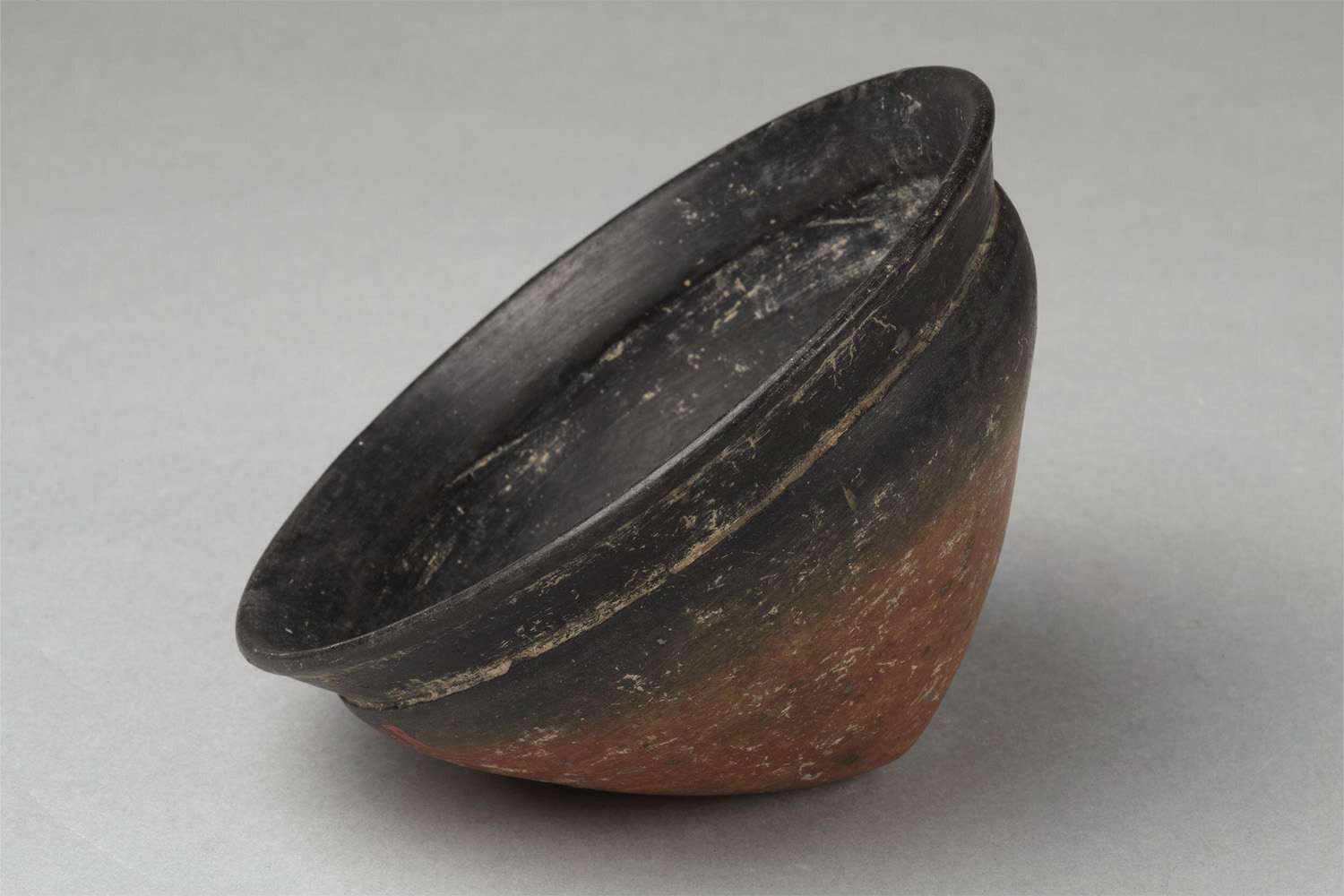ARTICLE
Black and Red Ware
A pottery style which derives its name from the black and red colours of the pottery wares, Black and Red Ware is significant for its chronological span — from the Neolithic Period to the Early Historic Period — as well as its geographical spread across most of the subcontinent. Its expanse has led scholars to believe that the ceramic style cannot be considered representative of a singular cultural sequence or artisan community in Indian proto- and ancient history. Black and Red Ware differs from Black on Red Ware — a pottery style associated with Harappan culture, in which both surfaces of the artefact are red and designs are painted in black.
While both colours may appear on the same surface, most objects typically have a red exterior surface and a black interior surface. The surfaces may be further decorated with paintings. The colour of the surfaces may have been achieved using the inverted firing technique, in which the pot is positioned upside-down in a kiln, with the interior filled with vegetal matter. When fired, the outer surface is oxidised, resulting in the red colour, while the inner surface is subject to reduction conditions, turning it black. Some scholars have suggested that a double-firing technique may have been used to achieve the same result. The discovery of a similar kind of pottery in ancient Egypt, dated to the fourth millennium BCE, has led to speculation that the technique may have originated there.
Black and Red Ware was first excavated and described by Mortimer Wheeler in 1947 and was initially called Satavahana Ware. However, following excavations in the post-Independence period, yields of Black and Red Ware artefacts were discovered in several cultural phases beginning with the Neolithic period in the third millennium BCE, at the present-day sites of Chirand in Bihar and Piklihal in Karnataka in India.
In Western India, Black and Red Ware pottery is associated with the Harappan culture at sites such as Lothal, Somnath (Prabhas Patan) and Bet Dwarka. In the post-Harappan phase, the pottery was seen in the Rangpur Culture and the Ahar-Banas Culture (corresponding to present-day Rajasthan). It was also found at the Chalcolithic period sites of Inamgaon, Theur and Chandoli in present-day Maharashtra and Navdatoli, Eran and Kayatha in Madhya Pradesh. In the Upper Gangetic Valley, at the sites of Atranjikhera, Uttar Pradesh and Noh, Rajasthan, it occupied a stratification layer between the Ochre Coloured Pottery Culture and the Painted Grey Ware Culture and was also found in Painted Grey Ware phases at several sites, including Atranjikhera, Hastinapur and Kaushambi in Uttar Pradesh. In the Deccan region, Black and Red Ware was found at megalithic sites, including Dharanikota and Nagarjunakonda in Andhra Pradesh. Black and Red Ware sites of the Historical period include Broach (now Bharuch) in Gujarat, Shravasti in Uttar Pradesh and Kalingapatnam in Andhra Pradesh. Black and Red Ware has also been found at several Chalcolithic period sites in present-day West Bengal, including the prominent site of Pandu Rajar Dhibi.
While the technique of firing Black and Red Ware may have been consistent across sites and time periods, there are no unique typological forms associated with the technique; rather, Black and Red Ware often conformed to the pottery forms of the cultures where it was found. For instance, Black and Red Ware artefacts found at Lothal, such as a small-necked jar and a bowl with an everted rim, displayed typically Harappan designs. Variations in the paintings on the artefacts were also observed; in Lothal, the objects were painted with strokes and wavy lines on the interior, while Black and Red Ware of the Ahar Culture were painted with dots between parallel lines, spirals and lozenge patterns.
The range of artefacts found in Black and Red Ware assemblages includes microliths, copper objects, ornaments, stone tools, beads, semi-precious stones, copper and iron implements, a seal of a three-headed animal at Bet Dwarka and animal and human figurines — notably figurines of a dog, hare, swan and dancing female at Lothal.
Bibliography
Mishra, Laxmi Kanta. “Black and Red Ware in Odisha: A Study in Its Distribution Pattern and Cultural Context.” Proceedings of the Indian History Congress, 73: 1187–1202, 2012. http://www.jstor.org/stable/44156320.
Singh, H. N. “Black and Red Ware: A Cultural Study.” In Essays in Indian Protohistory, edited by D. P. Agrawal and Dilip K. Chakrabarti, 267–83. Delhi: BR Publishing Corporation, 1979.
Singh, Upinder. A History of Ancient and Early Medieval India: From the Stone Age to the 12th Century. New Delhi: Pearson, 2016.









